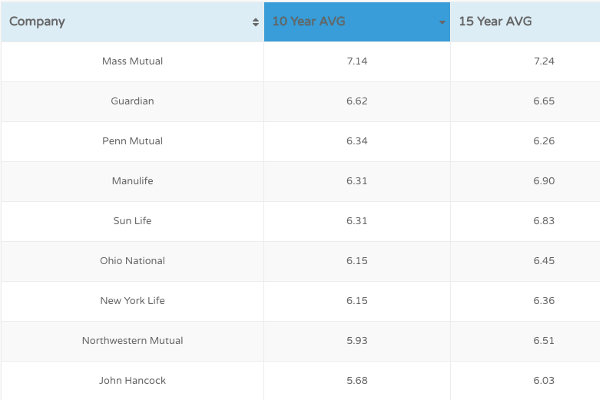Life insurance for kids may seem like an odd investment decision. You may wonder why children would need a life insurance policy.
However, it's a vital investment that can protect their future. A child insurance policy insures a minor's life in the same way as an adult policy. It's a savings-based account that grows in value.
Additionally, a child doesn't need to receive a medical examination to qualify for a policy. Overall, child life insurance will protect you and your child in the event of an emergency.
This article will provide an in-depth look into life insurance for children. Let's explore.
What Are Some Benefits of Child Life Insurance?
The main draw is that it saves money on behalf of the child. A policy also provides additional protection, as they can buy more life insurance when they become adults. Best of all, child life insurance applies to children regardless of their health status.
The policy is cash-value based. This means the account will grow in value throughout the years. You can do several things with the policy, such as:
- Turn in the policy in exchange for money
- Borrow against the overall value
If you choose to surrender the policy, however, you must pay a fee.
How Much Life Insurance Do I Need for My Child?
The amount you need depends on your life circumstances and concerns. If your child dies, for example, you'll need $50,000 or more in coverage. This amount will cover funeral expenses.
It will also cover the time needed off from work to grieve properly. If you're concerned about medical bills, choose a higher-end policy.
What is the Best Life Insurance for Kids?
The best life insurance for kids is a whole life term. A whole life policy is permanent. It includes a savings account that accrues in value.
On the other hand, a term life policy extends for a number of years. The policy will expire under two circumstances:
- When the policy reaches its expiration date
- When the child becomes an adult
It's a standalone policy that covers a child for a specified number of years. You can also add more coverage to the policy throughout the term. If you want cheap life insurance for kids, consider the term limit option. Term limit policies are usually cheaper than whole life policies.
However, most insurance companies offer whole life insurance for kids.
Why Should I Buy Life Insurance for a Child?
One reason to buy life insurance is because of the low premiums. Young children are cheaper to insure than older adults. Therefore, you can pay a cheaper premium throughout the lifespan of the policy.
- Note: To maximize life insurance gains, insure your child as early as possible. Life insurance policies set at an early age have more time to grow in value.
The child will also benefit from a financial cushion. It's also a good investment solution for college. You can use a whole life policy in conjunction with other college-savings plans to produce a well-funded college plan.
How Much Does a Child Life Insurance Policy Cost?
The cost will depend on such factors as the term and the life insurance company. If you buy a whole life policy for a 10-year term, for example, you'll pay a higher premium until your child reaches maturity.
However, a 20-year plan is more affordable. The 20-year option gives you a better chance of paying it off before your child becomes an adult.
Regarding the coverage limit, the amount depends on the insurance company guidelines. However, a typical policy amounts to $25,000, $50,000, $75,000, or $150,000.
What Type of Permanent Policies Should I Choose?
There are two types of permanent child life insurance policies: whole life and universal life. The universal option allows you to customize the policy as necessary.
You can change the policy based on your child's needs, including your needs as well. The universal life option has the same cash-value benefits as the whole life option. With that, the adjustments you make can affect the value over time.
On the other hand, the whole life alternative is a fixed plan. It has a guaranteed cash value, and you'll receive a fixed premium.
Regardless, universal life and whole life fall under the umbrella of a stand-alone policy. Stand-alone policies pay cash in the form of dividends.
You'll receive dividends when your account produces a profit. You can receive the funds in cash. You can also apply the dividends as a premium discount. Another option is to leave the additional funds in place so it can grow in value.
What If I Already Have Life Insurance Policy?
If you have a life insurance policy, you can add a child life addition to your current policy, otherwise known as a child rider policy. You can also add child life insurance to your spouse's life insurance policy.
The child rider option covers all of your children. A stand-alone policy, however, only covers individual children. There are some notable drawbacks to child rider policies:
- A child rider normally doesn't offer extensive coverage compared to stand-alone policies.
- Rider policies expire when the child reaches 25.
The good news is that most child rider policies turn into a permanent policy in the future. Moreover, child rider policies are cheap.
You can add children to an existing policy for as little as $2.50 each month. This small investment can give you between $10,000 to $15,000 worth of coverage.
Life Insurance for Kids: Is It Worth the Buy?
Life insurance for kids is a great option if you'll contend with any long-term expenses like medical bills. It's also a safeguard against catastrophe, such as the death of the child. Further, it protects your child in case he or she encounters unforeseen events.
Your child can benefit from the fund when reaching maturity, and they can customize the policy to their liking. Overall, child rider and stand-alone policies are not expensive.
This especially true for younger children. Therefore, obtaining a policy for a young child isn't a pricey investment, especially if you can obtain a fixed-rate premium.
Interested in reading more? Click here to learn how life insurance can benefit you.




